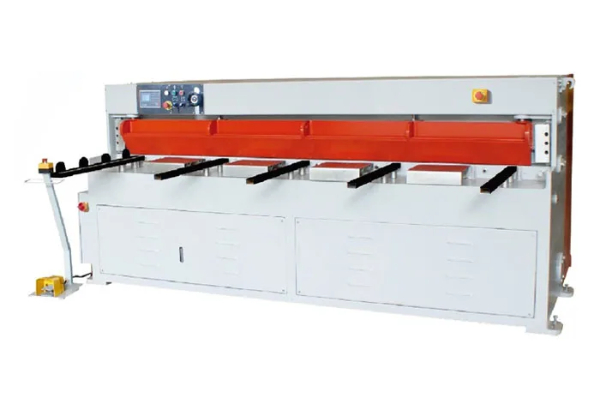
Best Practices for Operating and Maintaining Sheet Metal Folding Machines
- By:Metmac
- 2024-09-12
- 139
Best Practices for Operating and Maintaining Sheet Metal Folding Machines: A Blueprint for Efficiency and Longevity
In the realm of metal fabrication, sheet metal folding machines stand as indispensable tools, transforming flat sheets into intricate shapes that empower our modern world. To harness the full potential of these machines and ensure their enduring service, it is imperative to embrace best practices for their operation and maintenance.
Operational Excellence: Unlocking Precision and Safety
Master the Setup: Proper setup is the foundation for successful folding. Ensure accurate positioning of the clamps and back gauge to achieve precise bends.
Choose the Right Tooling: Select folding dies specifically designed for the material being processed. Incorrect tooling can damage both the machine and the workpiece.
Maintain Optimal Speed and Pressure: Adjust machine speed and folding pressure according to the material thickness and bend angle to prevent defects and premature tool wear.
Avoid Overloading: Respect the machine’s capacity limits to prevent overexertion and potential component failure.
Preventive Maintenance: Nurturing Performance and Longevity
Daily Inspections: Perform routine checks on moving parts, safety sensors, and hydraulic systems to identify and address potential issues early on.
Regular Lubrication: Grease and oil all moving components as per manufacturer recommendations to minimize friction and extend component life.
Cleanliness is Key: Keep the machine and work area clean to prevent debris from entering sensitive parts and compromising performance.
Periodic Overhauls: Schedule professional overhauls at regular intervals to inspect and replace worn or damaged components, ensuring optimal functionality.
Safety First: A Non-Negotiable Priority
Wear Appropriate Gear: Always don appropriate safety gear, including gloves, safety glasses, and earplugs, when operating the machine.
Follow Lockout/Tagout Procedures: Isolate the machine from power before performing any maintenance or repairs to prevent accidental activation.
Maintain Clear Work Areas: Keep the work area clear of obstructions and debris to minimize tripping hazards and facilitate safe operation.
By adhering to these best practices, manufacturers can maximize productivity, enhance product quality, and extend the lifespan of their sheet metal folding machines. These practices represent an investment in efficiency, safety, and enduring performance, ultimately driving success in the competitive world of metal fabrication.
-
Advanced Sheet Metal Rolling, Cutting, and Folding Machines for Efficient Fabrication
2025/10/22 -
High-Precision Sheet Metal Bending and Cutting Solutions for Modern Manufacturing
2025/10/22 -
High-Precision Solutions from Leading Sheet Metal Cutting Machine Manufacturers
2025/09/11 -
Reliable Sheet Metal Equipment for Sale to Support Precision Fabrication
2025/07/17
-
Advanced Sheet Metal Rolling, Laser Cutting, and Folding Machines for Precision Fabrication
2025/10/31 -
High-Performance Sheet Metal Bending and Cutting Machines for Modern Fabrication
2025/10/31 -
High-Quality Sheet Metal Equipment for Sale: Efficient Solutions for Modern Manufacturing
2025/10/31 -
High-Performance Sheet Metal Equipment for Sale: Forming and Shearing Solutions for Modern Fabrication
2025/10/22
-
Innovations in Steel Strip Slitting Machine Design and Technology
2024/05/11 -
Improving Accuracy in Metal Fabrication with Laser Metal Shear Machines
2024/05/11 -
Latest Technological Advancements in Rectangular Duct Machines
2024/05/11 -
Integrating Automation with Rectangular Duct Machines for Enhanced Productivity
2024/05/11
-
A Guide to the Latest Innovations in Sheet Metal Folding Machines
2024/11/29 -
Key Features to Consider When Investing in a Sheet Metal Folding Machine
2024/11/28 -
Enhancing Precision with Advanced Sheet Metal Folding Machines
2024/11/27 -
How to Choose the Right Sheet Metal Folding Machine for Your Workshop
2024/11/26






